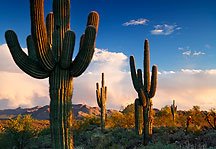Boeing just unveiled it’s new 787 Dreamliner today to an airline hanger full of employees out of Paine Field in
of Paine Field in
While Boeing and its hard-working employees deserve a congratulations and have earned a day of back-slapping in the international spotlight, let's focus on the environmental end of this new machine and what it offers in terms of fuel efficiency. Here’s what the CEO of Boeing has to say about the Dreamliner:
Boeing Chief Executive Jim McNerney said the 787 will bring about a "dramatic improvement in air travel: to make it more affordable, comfortable and convenient for passengers, more efficient and profitable for airlines, and more environmentally progressive for our Earth."
Here's more comments on the design, from an article on Physorg.com:
The 787 -- Boeing's first new model in 13 years -- will make its maiden test flight later this year before going into commercial service with Japan's All Nippon Airways (ANA) in 2008.
The new aircraft boasts several revolutionary design features, most notably the use of high-tech plastic composites instead of aluminum.
Up to 50 percent of the primary structure of the plane -- including the fuselage and wing -- will be made of composites such as carbon-fiber.
"By manufacturing a one-piece fuselage section, we are eliminating 1,500 aluminum sheets and 40,000 - 50,000 fasteners," Boeing said in a statement.
The composites used in the Dreamliner are also stronger and lighter than traditional materials, allowing the plane greater fuel efficiency.
"In addition to bringing big-jet ranges to mid-size airplanes, the 787 will provide airlines with unmatched fuel efficiency, resulting in exceptional environmental performance," Boeing has said. "The airplane will use 20 percent less fuel for comparable missions than today's similarly sized airplane."
Lower fuel-costs could in theory lead to cheaper long-haul travel, aviation industry analysts say.
Richard Aboulafia, chief analyst with the Teal Group Corporation, said the Dreamliner was poised to revolutionize air travel if its projected rates of fuel-efficiency proved accurate.
"If you look at it from an airline standpoint: you don't have a choice," Aboulafia told AFP. "If you don't have a 787-class aircraft and your competitor does, he can under-price you and out-profit you.
"We can't be sure of their performance objectives, but if it does what they say, it's revolutionary, both in terms of the plane's operating economics and durability," Aboulafia added.
It's nice to see that it offers 20% more fuel efficiency over that of like-sized jets. While I wish it could have been better than that, the lighter design means it will be able to travel further distance faster. Despite my personal high standards and expectations for transportation fuel efficiency, which can probably be criticized as unrealistic, it’s nice to see that a major player in the aviation industry is making efforts with innovative design and finding ways to see passenger jets attain higher standards for fuel efficiency.
The private sector needs to step up and do more, however. The sector doesn’t tend to do enough to make such efforts due to the simple fact that considerations such as being environmentally friendly cost time and money. However I think things are starting to change.
The public is becoming more aware of environmental issues and that a successful future for the environment—or if there’s to be a sunny future at all—it’s going to require participation and efforts from EVERYONE, including the private business sector. With companies such as Boeing who are involved in the transportation sector, that involves the use of green materials, better design, and new ideas about fuel efficiency—or cleaner or renewable fuels to help us get around.
So while today’s 787 Dreamliner unveiling was encouraging, it only reminded me of how slow business is to make real and meaningful commitments to the environment. We need to step up and do more—and start acting fast—and that means the private sector as well.
To have the private sector embrace environmental issues in a meaningful way, that means successful public-private partnerships. If you were watching the 787 Dreamliner unveiling today, you would have seen the high number of government officials in attendance. While some were there for the cameras, many were behind the scenes as part of the effort to carry forward with the mission upholding the public-private partnership team that made this project successful.
successful public-private partnerships. If you were watching the 787 Dreamliner unveiling today, you would have seen the high number of government officials in attendance. While some were there for the cameras, many were behind the scenes as part of the effort to carry forward with the mission upholding the public-private partnership team that made this project successful.
Partnerships between the government and private sector have been happening for years; they don't just fly on flagpoles and advertise themselves on banners in skyscraper breezeways. In addition to occurring in signed agreements, they're brought to the forefront at the ballot box, galvanized in commission and council meetings, and they can be seen in the way municipal codes are written.
It's this type of communication, openness, and partnering amongst the public and private sector that will also serve as part of the blueprint for success with the environment and everything that effects it. The 787 Dreamliner is a small teaser of what greater things we're capable of and should be pursuing. S
















No comments:
Post a Comment